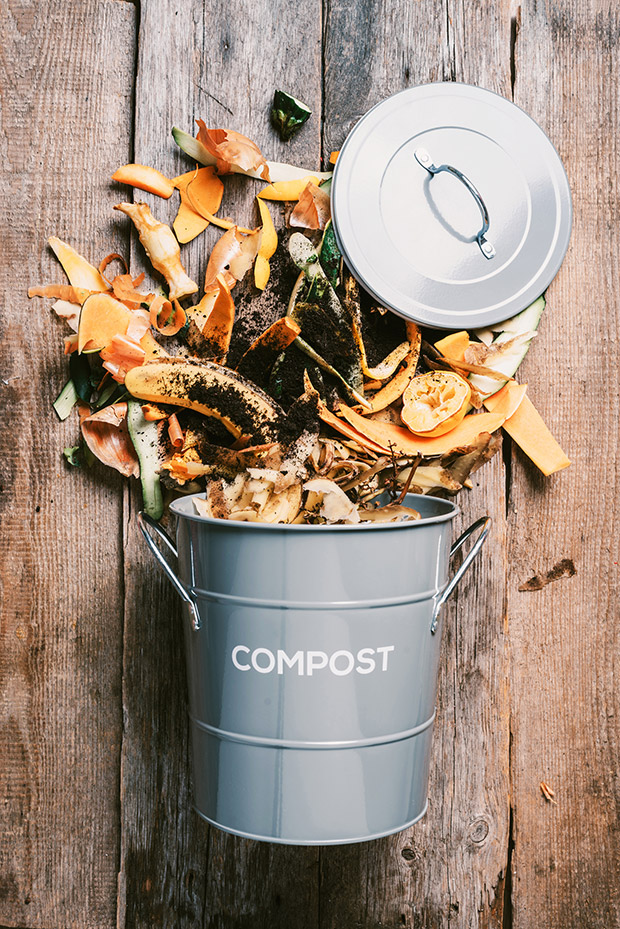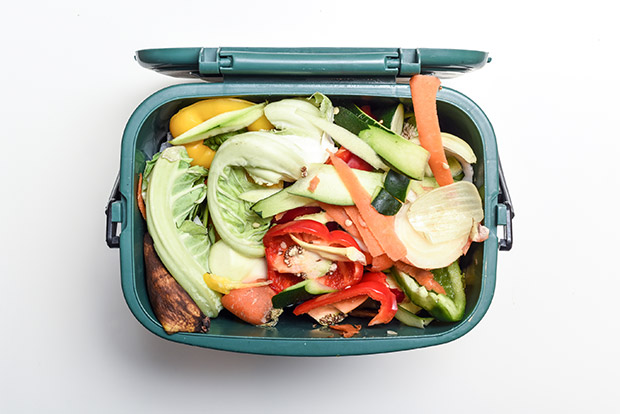10+ tips for starting a compost for beginners (PLUS how bokashi works)

Even when minimising waste as much as possible, some food scraps can’t be eaten. Here’s how best to combat food scraps.
Words: Emma Rawson, Lee-Anne Duncan
Composting isn’t hard. These quick tricks will help a compost heap reach the correct heat to break down food waste.
No fancy bin required: A compost system can be as simple as a pile in the corner of the garden or a bin. There are many multi-drawer systems on the market, but a simple pyramid or tardis-shaped bin is best for beginners.
Location location: Choose a spot with free-draining soil so that worms and insects can move into the compost easily. Place the compost bin in the sun to speed up decomposition.
Get a balance: Good compost has the right balance of nitrogen (green waste and vegetable scraps) and carbon (brown garden waste, such as leaves and sticks, or cardboard). The ratio should be 25-parts carbon to one-part nitrogen. This is significantly more sticks, leaves and dry matter than green waste or food scraps. Many compost bins fail because this balance is out – there’s too much nitrogen and not enough carbon. Wet compost is a sign of too much nitrogen. Supplement the carbon with shredded egg cartons, scrunched up paper, cardboard and fallen leaves collected from public parks. Try layering green and brown waste.
Turn the compost: Aerate the compost with a garden fork to help disperse oxygen through the pile, attracting friendly microorganisms.
Know what not to compost: Never put meat or dairy products into compost, although these can go into a bokashi bin (see sidebar). Diseased plants may spread fungus spores via the compost throughout the garden. An efficient hot-compost bin will kill weed seeds, but beginners should avoid composting weeds, particularly if they are seeding, or risk spreading weeds around the garden. Put diseased foliage and seedy greens into a green-waste collection service instead.
OTHER FOOD SCRAP OUTLETS

Worm farms: Worms turn most vegetables and fruit scraps except citrus and all members of the allium family (including onions, garlic, leeks and spring onions) into compost. Worm farms vary in size from large to those that are suited to a balcony.
Compost collectives: See the Share Waste website to match those who have scraps and lack compost, with others who have compost and need scraps.
Council or commercial collection: Organic waste makes up 30 to 40 per cent of New Zealand’s municipal waste. Some councils – such as in Christchurch and Auckland – have been trialing and/or offering a separate food-waste collection service. Many centres also have commercial collection companies, such as Wellington’s Kai to Compost, operated by Envirowaste, or Auckland’s We Compost.
Don’t use waste-disposal units: Food put through an InSinkErator is processed as wastewater and eventually ends up in the sea, or the solids are moved to a landfill. This might be out of sight, but it is not out of the waste cycle.
BOKASHI BASICS
The bokashi is an anaerobic (without air) composting system ideal for small spaces. The system composts most food waste even that which can’t go into regular aerobic composting, such as meat, fish and dairy. The bokashi works on a dual-bucket system, where one bucket with holes in the bottom is slotted inside another bucket. Food scraps are put in the top bucket, and a tablespoon of special microorganism mix (an inoculant) is sprinkled on top to aid the fermentation. (If the weather is warm, or smelly foods have been added, sprinkle two tablespoons.)
How it works
Within a week, food scraps begin to break down. The leftovers pickle in the top bucket and a potent fertilizing liquor, or leachate, runs into the bottom bucket. This liquid should be drained off every few days to maintain a bacteria-friendly environment and used in a compost tea (add three tablespoons of liquid to five litres of water) to water the garden.
When the bucket is full of scraps, and after a minimum of 14 days, the contents can be added to aerobic composts or buried in a fallow spot in the garden. Be mindful that the buried scraps are acidic and should not touch plant roots. (Don’t plant anything in that area for at least two weeks.) Then, give the bucket a good rinse and start again. If a household or workplace is producing a large quantity of scraps, several bins may be required to ensure the food scraps have enough time to break down.
When good smells go bad
It’s essential to keep the bin lid on tightly at all times because oxygen needs to stay out or the scraps will simply rot. When working well, the inside of the bokashi should smell “sweet and sour” – like it’s fermenting in a pleasant, kombucha-like way. If it smells like rotten vegetables, that’s no good. The damage may be able to be reversed by adding more bokashi bran inoculant. Otherwise, dump the batch into a regular compost bin, clean the bucket and start again.
Why doesn’t bokashi smell?
Bokashi systems shouldn’t be smelly. This is because the microbes at work within it (yeasts, producers of lactic acids, and others) don’t produce the sulfuric acid that gives outdoor aerobic piles their characteristic stench.

